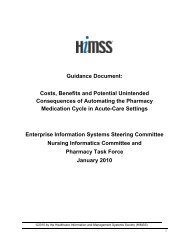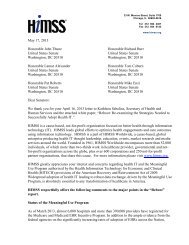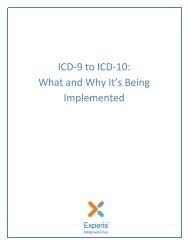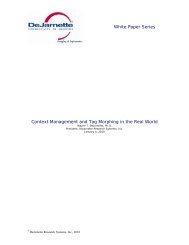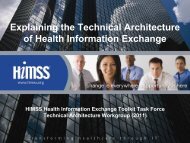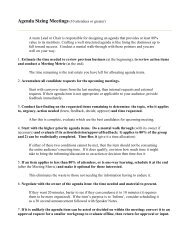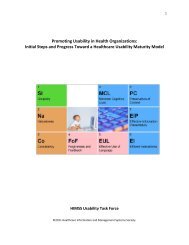Change Management Strategies for an Effective EMR ... - HiMSS
Change Management Strategies for an Effective EMR ... - HiMSS
Change Management Strategies for an Effective EMR ... - HiMSS
Create successful ePaper yourself
Turn your PDF publications into a flip-book with our unique Google optimized e-Paper software.
Chapter 1: Th e Business Case <strong>for</strong> <strong>Ch<strong>an</strong>ge</strong> <strong>M<strong>an</strong>agement</strong> 3<br />
m<strong>an</strong>agement deals mostly with the hallway situation, facilitating the<br />
hum<strong>an</strong> tr<strong>an</strong>sition from the present to the future. Th ese days, ch<strong>an</strong>ge is<br />
ongoing <strong>an</strong>d requires focused leadership if it is to be as fast <strong>an</strong>d painless<br />
as possible.<br />
Key Tip<br />
Our assumption is that the software you are implementing<br />
works. If Ifthe the software doesn’t work, you have <strong>an</strong>other kind of<br />
problem; problem—one one that even the best ch<strong>an</strong>ge m<strong>an</strong>agement won’t<br />
resolve.<br />
Th e three legs of the project stool represent the critical components<br />
of <strong>an</strong> implementation (Figure 1-1)—People, Process, <strong>an</strong>d Technology.<br />
Th e people are the most import<strong>an</strong>t! When technology projects<br />
fail, it is primarily due to a lack of use <strong>an</strong>d not a failure of the soft -<br />
ware. Th e focus of ch<strong>an</strong>ge m<strong>an</strong>agement is people <strong>an</strong>d the objective is<br />
to ch<strong>an</strong>ge behavior. Th is is good <strong>for</strong> business because it accelerates the<br />
ch<strong>an</strong>ge process so benefi ts are achieved faster. <strong>Ch<strong>an</strong>ge</strong> m<strong>an</strong>agement<br />
is not about being nice or placing <strong>an</strong> emphasis on feelings. It’s about<br />
per<strong>for</strong>m<strong>an</strong>ce improvement <strong>an</strong>d results.<br />
If you search the literature, you will fi nd a variety of defi nitions of<br />
hum<strong>an</strong>-focused ch<strong>an</strong>ge m<strong>an</strong>agement. Th ey all cover similar concepts,<br />
sometimes using diff erent terminology. Th e simplest expl<strong>an</strong>ation of<br />
ch<strong>an</strong>ge m<strong>an</strong>agement is to say, “It’s all about the people!” But <strong>for</strong> the<br />
purposes of this book, we exp<strong>an</strong>d on that concept <strong>an</strong>d use the following<br />
defi nition of ch<strong>an</strong>ge m<strong>an</strong>agement:<br />
• A structured process designed to deal directly <strong>an</strong>d intentionally<br />
with the hum<strong>an</strong> factors involved in not just pl<strong>an</strong>ning <strong>an</strong>d implementing<br />
<strong>an</strong> <strong>EMR</strong> but through behavior ch<strong>an</strong>ge, achieving the<br />
<strong>an</strong>ticipated benefi ts that justifi ed the project in the fi rst place.<br />
• Desired behavior ch<strong>an</strong>ge is achieved by helping people underst<strong>an</strong>d<br />
<strong>an</strong>d internalize ch<strong>an</strong>ge <strong>an</strong>d by preparing them to be successful<br />
contributors in the future state. In the case of <strong>EMR</strong> implementations,<br />
eff ective ch<strong>an</strong>ge m<strong>an</strong>agement delivers users who are willing<br />
<strong>an</strong>d able to use <strong>an</strong> <strong>EMR</strong> in a way that satisfi es the requirements of<br />
the job, the needs of the patient, <strong>an</strong>d the health of the org<strong>an</strong>ization.




